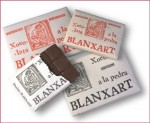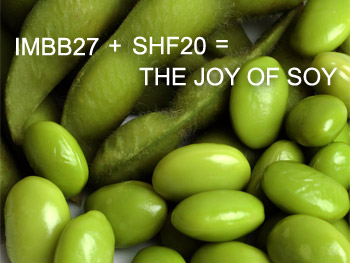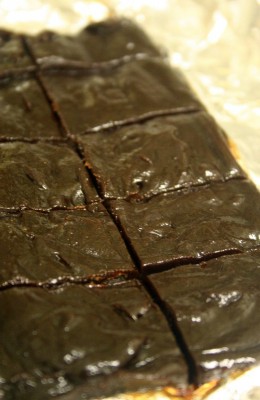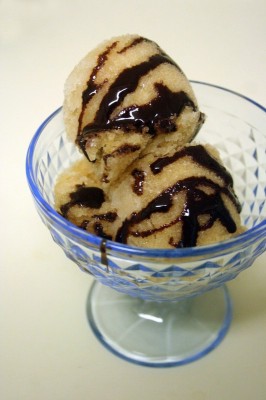Caramel surprise chocolate chip cookies
Before you think I’ve gone nuts for pairing chocolate with garlic again, I have an excuse. These cookies were a birthday present for my roommate, who loves garlic. She stores several cups of garlic in the fridge and even pre-minces it so it’s ready when the moment strikes.
Since my idea of a gift always involves sugar, I made garlic brittle chocolate chip cookies, inspired by the Gilded Fork. The garlic is pre-cooked and added to caramelized sugar, so it has a sweet, nutty flavor. If you’ve ever had roasted garlic, you know that garlic loses its bite after a long period of cooking.
Because I’m a sucker for new recipes, I made the cookie dough from a review copy of Elizabeth Falkner’s Demolition Desserts. The first chapter is devoted to chocolate chip cookies. (The premise sounds better than it is. I hoped for a chocolate chip cookie primer, giving variations on chewy, cakey and crisp cookies, like Alton Brown did so well in Good Eats. Elizabeth’s chapter is a compilation of really different cookies, like traditional chocolate chip and chocolate-chocolate chip, without a thorough explanation.)
These cookies didn’t turn out, and it had nothing to do with the garlic (they didn’t taste nasty, but I don’t think the garlic was necessary). They were as thin as credit cards and extremely floppy. The dough didn’t seem to cook.
Lessons learned:
- When adding hard candy to cookie dough batter, reduce the sugar in the dough accordingly. Elizabeth’s dough had 3/4 cup more sugar than the Gilded Fork recipe. Too much sugar prevents the dough from setting up. You’ll burn the sugar before the dough’s done.
- Corn syrup creates a pliant, chewy cookie. I found this out because the brittle had a little corn syrup. Finally, the secret to chewy cookies is revealed!
- For the deepest flavored brittle, cook the sugar just before it burns. My caramel never registered hot enough to reach the “hard crack” stage, so I kept cooking it. I only pulled it off the heat right when I smelled a little of it burning. Luckily, I got a smoky, molasses-flavored brittle.
- Grey sea salt rocks. I used salt from Guérande in Brittany, France, which has a deep, almost smoky flavor. The large, irregular crystals melt on your tongue slowly, so the flavor pops. From now on, I’ll add it to all my cookie doughs. At $8 a pound it’s seems frou frou, but if you use it strategically, the canister lasts you a while.
The idea of brittle in cookies is promising, but this recipe needs some work. Next time, I’ll use cacao nibs instead. No more garlic and chocolate for me. If you’re feeling adventurous, maybe diced fried bacon would go well in the brittle, too.
Ingredients
Instructions
- Blanch the garlic in boiling water for about 5 minutes. Drain, peel, and mince the garlic. Cool completely. (This step mellows the taste of raw garlic.)
- Line a baking sheet with a Silpat, parchment, or wax paper. In a large, heavy saucepan, combine the sugar and corn syrup over medium heat. Stir until the sugar dissolves, about 5 minutes. Continue to boil until the mixture reaches 300° F (hard crack stage) on a candy thermometer and is dark golden brown.
- Immediately remove from the heat and add the butter and vanilla, stirring until the butter melts and is completely blended. Add the garlic, and stir to coat completely.
- Carefully pour the hot mixture onto the prepared baking sheets and spread evenly with a heatproof, rubber spatula. Sprinkle with salt. Cool completely, about 1 hour, and break into small chunks.
- With an electric mixer, beat the butter with the granulated and brown sugars until just combined and sandy (do not whip). Mix in the egg until just combined, about 3 seconds. Add the flour, baking soda, baking powder, and salt and mix until just incorporated. Mix in the chocolate chips and garlic brittle.
- Refrigerate the dough for at least 30 min., preferably overnight.
- Preheat the oven to 350° F. Line a large cookie sheet with parchment paper or a Silpat (do not attempt with greased foil, which makes the cookies spread, or wax paper unless you like the taste of crayons). Drop one-inch balls of dough a few inches apart. Bake until just golden around the edges, about 13-17 min. Rotate the pans from top to bottom and front to back after 7 min. Transfer the cookie sheet to a rack to cool completely.
Notes
Brittle adapted from Gilded Fork; cookie dough adapted from Elizabeth Falkner’s Demolition Desserts

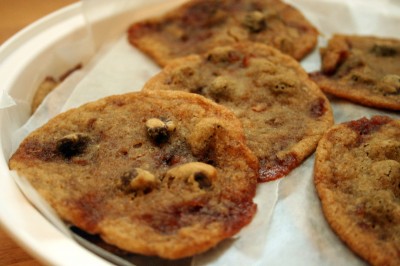
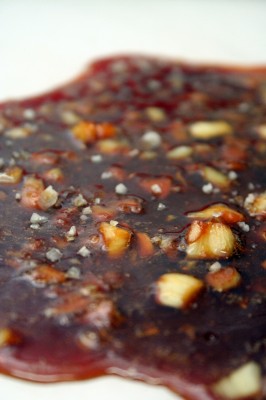



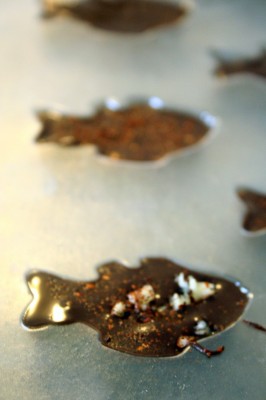
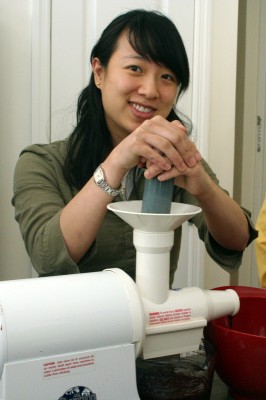
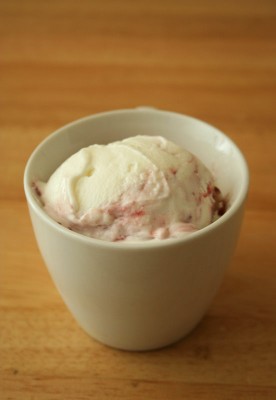
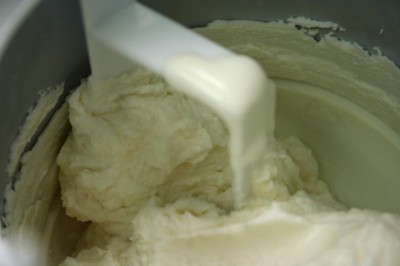
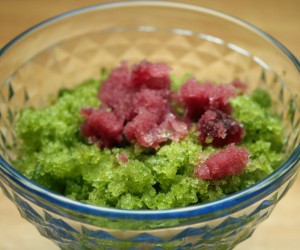
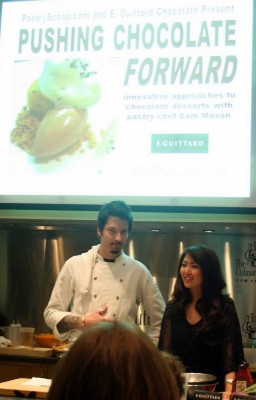
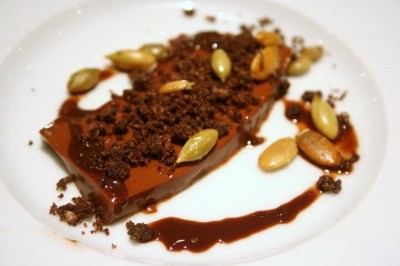




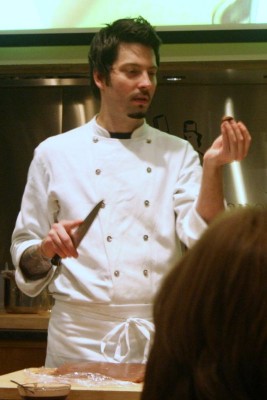
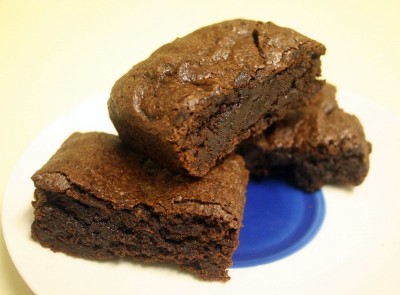
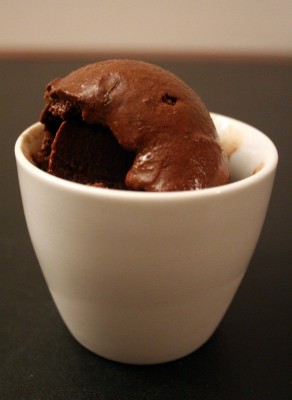
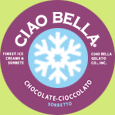
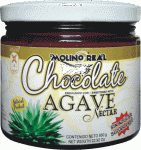
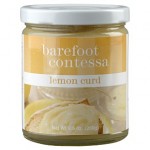
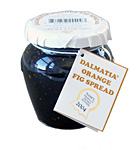
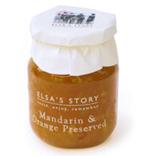

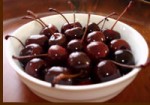

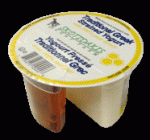
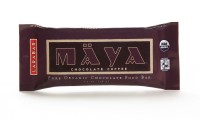

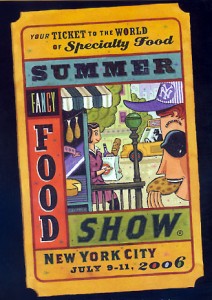

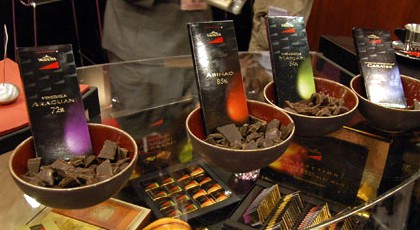
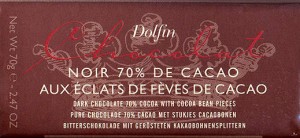



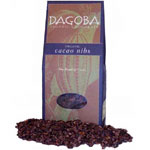 Dagoba
Dagoba